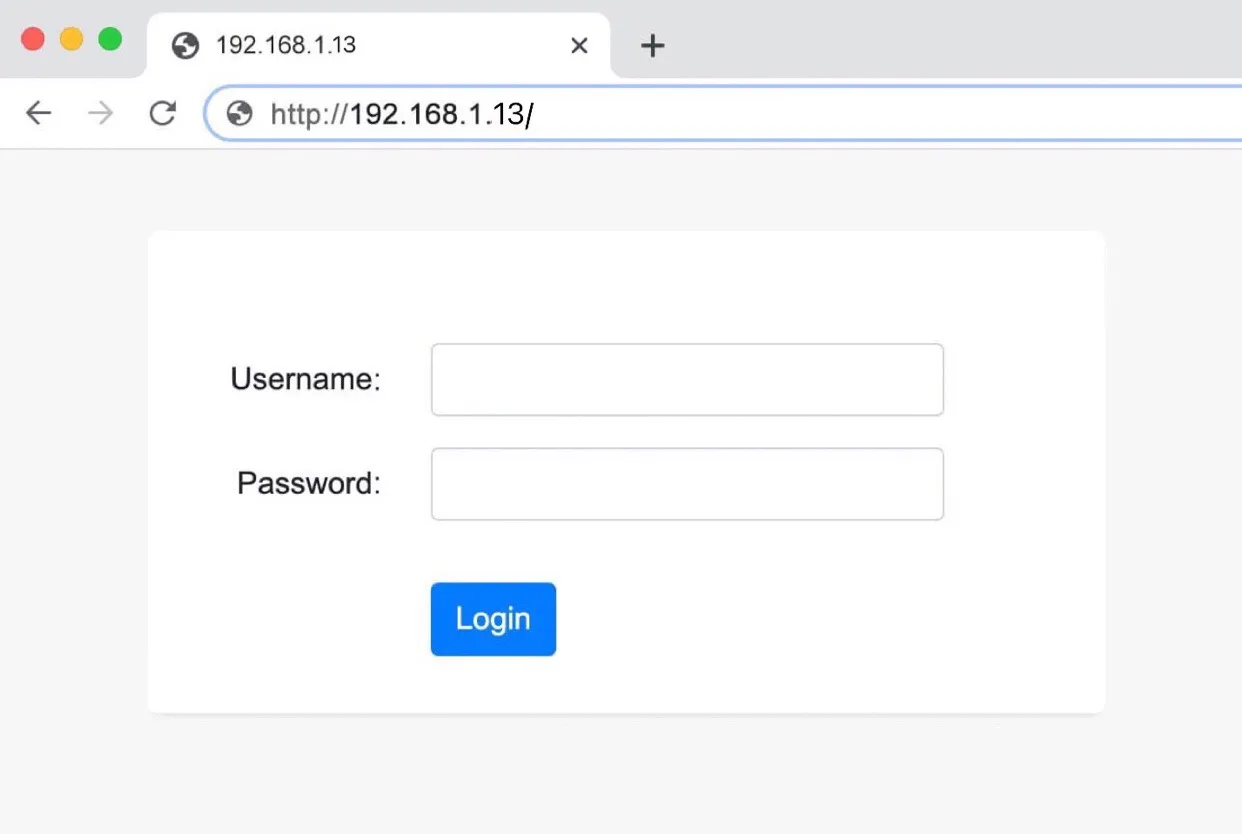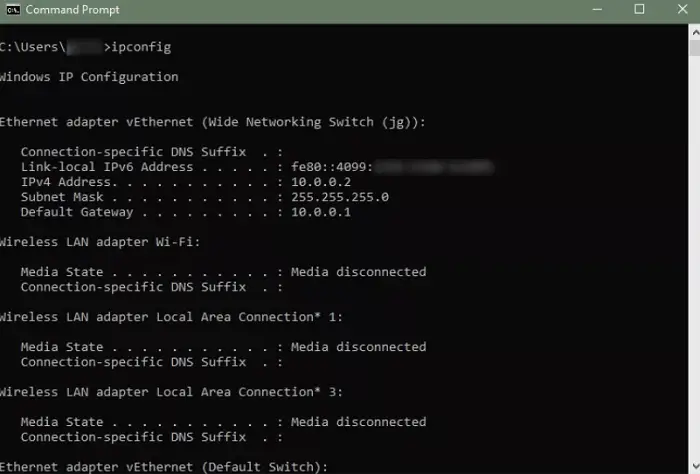Every router is assigned individual IP addresses for the two different interfaces it interacts with – a public IP address assigned by the modem for communication over the Internet and a private IP address for communication within the local network (LAN). 192.168.1.13 is a reserved personal IP address of the registered private network 192.168.1.0 and is usually used for smaller networks; hence its subnet mask is 255.255.255.0, which means the last 8 bits are used to identify the hosts in the network.
Routers assign private IP addresses to the devices connected to the local network, which they accomplish with the Dynamic Host Configuration Protocol (DHCP). A gateway or a proxy server establishes a connection between the Internet and the private network. 192.168.1.13 is a widely accepted individual IP address for routers.
See also: How To Perform HG8245A Firmware Update Easily?
Table of Contents
How to Log in to the 192.168.1.13 IP Address?
Private addresses like 192.168.1.13 are invisible to the Internet, so having a running Internet is not a requirement to log in to such IP addresses. However, Connect your device to the router by either an Ethernet cable or wirelessly. To ensure this, you have to follow the steps given below to log in to the 192.168.1.13 IP address:
- Copy and paste this URL into the address bar of a browser such as Chrome or Safari – https://192.168.1.13 and press enter. You will see a page for logging into the 192.168.1.13 IP address.
- This screen will now ask you for the username and password to allow you to access the router admin panel. Enter the default ones to proceed unless you have changed the login credentials.
- Check if one corresponds to your default login username and password by using them to log in to the 192.168.1.13 interface.
Sometimes while trying to access the interface of IP address 192.168.1.13, the browser will respond with a message like:
“This site cannot be reached.
It took too long to respond.”
When you find yourself in this situation, there are a few possibilities:
- You did not enter the IP address accurately. If this is the case, then enter the correct IP and retry.
- 192.168.1.13 is not the private IP address corresponding to your router. To find out if this is true, continue reading for how to know your router’s IP address.
See Also: 192.168.1.108 IP Login Guide, Username & Password
Access Your Router Admin Panel
You first need to learn how to figure out your router’s private IP address, like 192168.1.13. The different techniques to do that, depending on which OS you’re using, are below:
See Also: 10.0.0.2 Admin Login, Username & Password
Windows OS
- Open Command Prompt on your device.
- Type the command – “ipconfig” and press enter.
- Information regarding your device’s IP address will appear. Find the section with the title – “Wireless LAN Adapter WiFi.”
In this section, you will see a field called “Default Gateway:” containing the private IP address you are looking for.
Linux OS
- Open Terminal on your device.
- Execute the command – “route –n.”
- The Kernel IP Routing Table will appear with a ” Gateway ” column. You will find your router’s private IP address here.
Mac OS
- Go to System Preferences > Internet & Wireless > Network > WiFi.
- After this, click on “Advanced” and then click on the “TCP/IP” tab.
- You will see numerous fields, one of them being “Router:” which will give you the router’s private IP address.
Now that you understand how to find your router’s private IP address (192.168.1.13), you can easily use it to get to the login screen of your router’s admin panel, following which you will be in a requirement to enter the username and password. Once you do that, you will triumphantly be logged into the router admin panel.
See Also: 192.168.2.1 Admin Login, Password, User & IP
Changing Your Router’s Private IP Address
If you wish to modify the current IP address of your router, you can do so by using the router admin panel. To do this, you must understand these easy steps:
- Log in to your router admin panel by following the steps mentioned above.
- Go to Basic Setup and click “next” to continue to your network configurations.
- See LAN under the Network Configuration title, where you will also find your router’s current private IP address.
- You will be able to modify the last two octets of the IP address. You can set it to 192.168.1.13 or some other valid private IP address. Remember to use any number from 1 to 254 for the last two octets. Also, ensure you don’t assign an address already assigned to another device in the network.
- Now click on Apply and let your router reboot.
- Once this is done, recheck your router’s IP address to ensure it has been changed.

What to Do if you Forget Router’s Username and Password?
See Also: 192.168.10.1 Admin Login, Username & Password
If you are unable to log in to your router admin panel because you don’t know the credentials you require, then there are two possibilities:
- You don’t know the default username and password of your router.
- You did not note down the username and password you set for your router, and now you can’t remember them.
If it’s the second case, there is only one solution – find the reset button on your router to revert it to its original factory settings. This way, you will have to use the default login credentials; from there, you can change them as you wish. But you’ll also need to perform network configurations to restore the router’s functionality according to your need.
One concern is how to get your router’s default login credentials. For this, you can try one of the following methods:
- Refer to your router’s user manual, which must have the default username and password and much other helpful information regarding router configuration. If you do not have the hard copy, you can search for it on Google by searching for the router’s model number and the “user manual.”
- Websites like https://www.routerpasswords.com/ and https://portforward.com/router-password/ help find the default login credentials belonging to various router brands.
- It may also be possible that the username and password are present on the router itself on a sticker. Look for the sticker and use the credentials mentioned on it to log in.
How to Troubleshoot Router Errors?
Restart your router – Whenever you’re facing fluctuating internet connectivity, slow responses, or inactive LED signals, turn off your router and tap it back on after waiting a few minutes. More often than not, this solution works, and your network starts working correctly.
Ensure there are no loose cables – Sometimes, routers don’t function properly because the wires are plugged in carelessly. The cause is little, but the effect is not, and people usually blame the manufacturing companies.
Refer to your router’s user manual – Reading manuals can be tedious but always helpful. It can have all the information you need, such as the meaning of all the LED signals, how to configure it, the router’s specifications, security settings, troubleshooting tips, and much more.
Location of the router – The router’s site is critical because the antenna receives and transmits signals without interruptions. Ensure that no metal devices surround the router and block its movement.
So it’s natural that there will be frequency and channel usage conflicts. A less congested channel is preferable, and you can decide which channel to use by analyzing them all using tools such as SolarWinds WiFi analyzer or NetSpot.
Don’t let your router overheat – Overheating results in internet disconnectivity and wear out of the router before its lifetime. Keeping the router’s vents clean by blowing compressed air can help prevent overheating.
FAQs
How can I log into my router?
The password needed to access the router is known as the router login. Hence, you can change the router's default credentials to avoid unauthorized access. This password is necessary for users to enter to access the network.
What is the router's IP login?
Although 192.168.1.1 is the address for most routers, you should first double-check it. Type cmd into the search bar to launch the Command Prompt. Your router's IP address can now be accessed. Run the command after you type ipconfig.
What is my router password?
Select the WiFi network from the given connections in the Connections section of the Network and Sharing Center. Choose Wireless Properties under WiFi Status. Select the Security tab while examining Wireless Network Properties. Select the Show characters checkbox after that. So, the Network Security Key box shows the password for your wireless network.
Can I access 192.168 1.1 without the Internet?
No, accessing the router's settings requires that you be available to the network. When other devices connect, they join the router's private LAN network.
What is a network security key?
A network security key is a biometric, digital, or physical data. Use it to verify a user's identity and permit them to connect to a private network. Hence, it just acts as a wireless network password.
Conclusion
There are many things to learn about IP addresses and routers, and I hope this article presented valuable insights into the private IP address 192.168.1.13 and accessing the router admin panel. You can use the router admin panel to modify LAN settings and WAN settings, see which devices are connected to the local network, make your WiFi speed faster, use DNS facilities, alter your MAC settings, enforce security in your network, and much more.
Check Out Other IP Address As well:

Learn everything that is related to Router Login, IP Addresses in an extremely simple way. Also get access to all the usernames and passwords of different routers.





